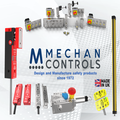
Posted to News on 6th Mar 2015, 12:05
Couplings provide reliable operation at cement plants
Renold is promoting its rubber-in-compression couplings for arduous applications in cement manufacturing, such as grinding mills, kilns, conveyors, crushers and fans.
Cement manufacturers can cut maintenance and downtime by fitting rubber-in-compression couplings on arduous applications like grinding mills, kilns, conveyors, crushers and fans, according to Alan Dean, business development director, at Renold Hi-Tec Couplings. According to Dean, rubber-in-compression couplings are the most reliable option for heavy-duty, arduous applications because, due to their design and construction, they are intrinsically failsafe and maintenance free.
Rubber-in-compression couplings comprise two strong round metal sections fitting one inside the other, with what looks like the paddles of a paddle steamer projecting inwards from the outer section and outwards from the inner. Rubber blocks are placed in the spaces in between the paddles and, as the outer section is turned by the engine, it drives the inner section through the rubber blocks. As this happens the rubber is compressed, and hence the term rubber-in-compression.
There are no wearing components in a rubber-in-compression coupling, as there are in gear, or other types of metallic coupling. Due to the fact that the rubber blocks are totally encased in metal they can only change shape during operation and will not wear or fail, thus ensuring reliable operation at all times, even on the most arduous applications. The couplings are also maintenance free, eliminating the need to shut down plant and equipment for lubrication, and will provide at least 10 years of trouble-free service.
The rubber blocks in the couplings eliminate backlash and are carefully selected for each application to significantly reduce vibration, shock loading and torque amplification that would otherwise reduce the life of plant and equipment causing premature fatigue failure.
Further information about Renold's rubber-in-compression couplings can be found at www.renold.com.
Want the latest machine building news straight to your inbox? Become a MachineBuilding member for free today >>

















